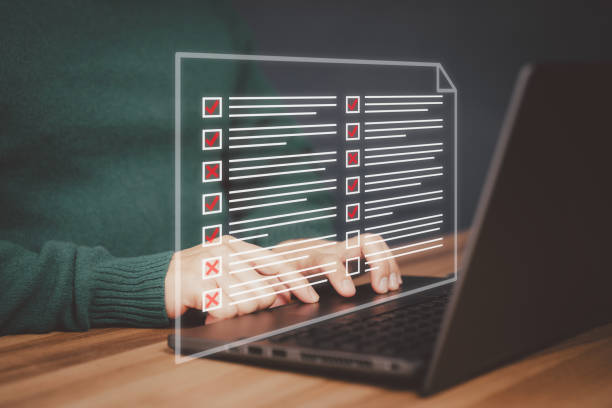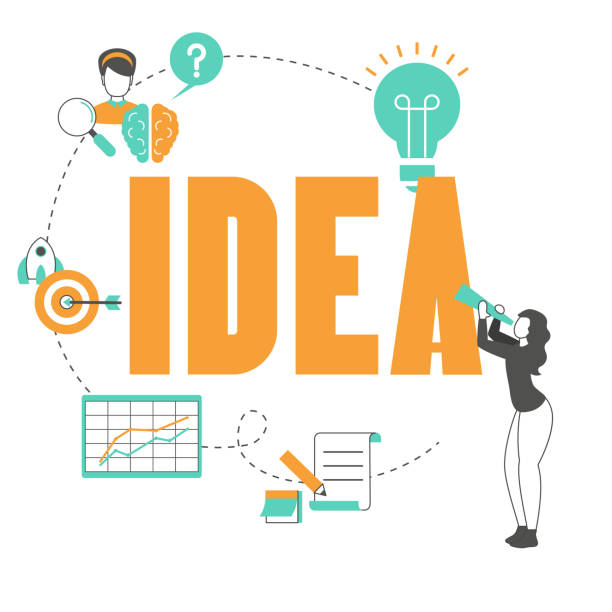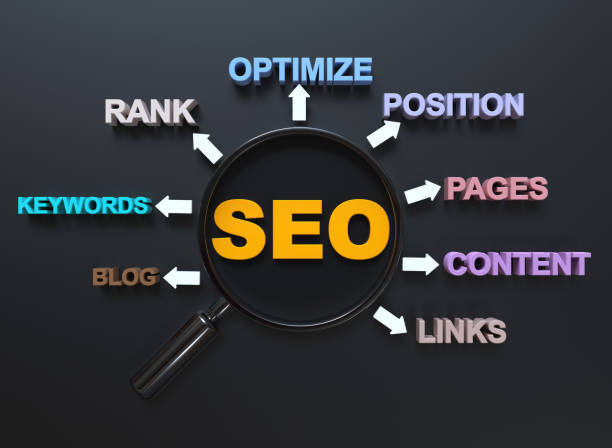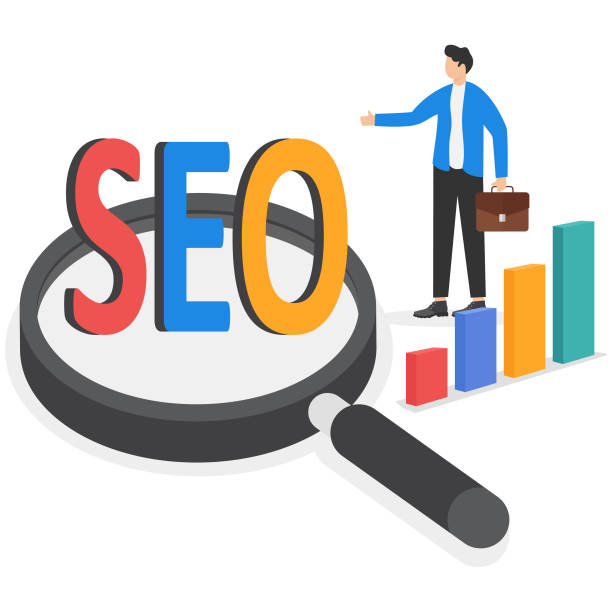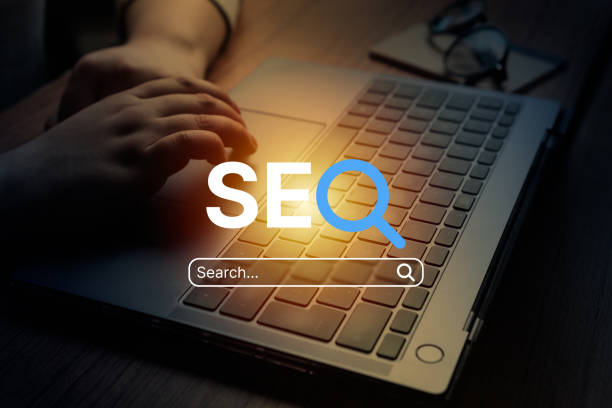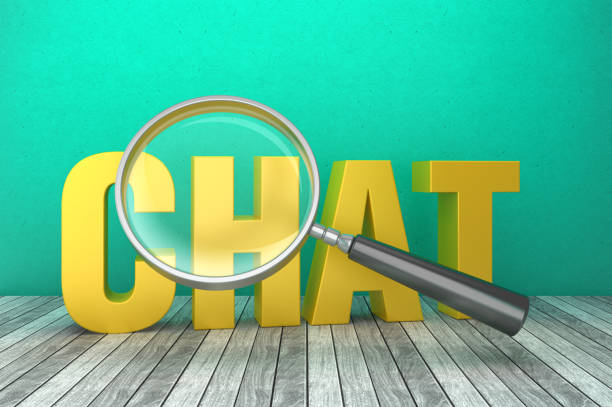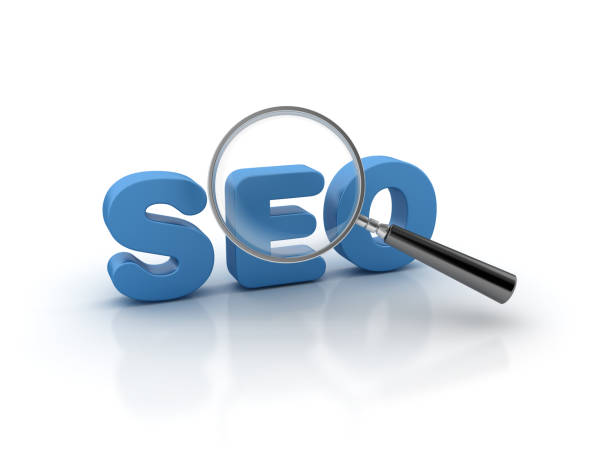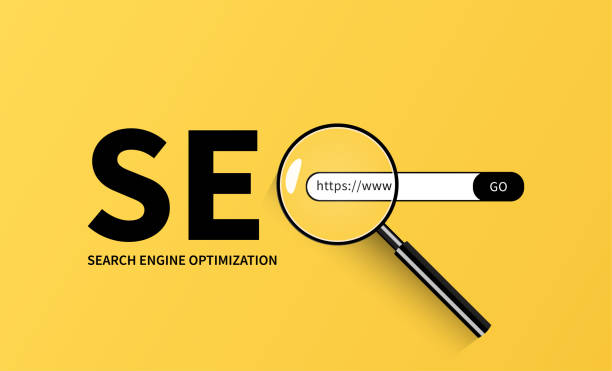An Introduction to On-Page SEO and Its Importance
In today’s highly competitive world, a strong online presence is vital for every business.
But simply having a website is not enough; you must ensure that your website is seen by search engines.
This is where the concept of #On-Page SEO comes in.
On-Page SEO refers to a set of actions you perform within your website to improve its ranking in search results.
These actions include optimizing content, site structure, and HTML elements.
The main goal of on-page optimization is to help search engines better understand the topic and value of your pages so they can correctly index them and display them to relevant users.
The importance of On-Page SEO stems from the fact that you have full control over it, and by correctly applying these techniques, you can have a direct impact on your site ranking and attracting #organic traffic.
This explanatory and educational section will help you gain a comprehensive understanding of this core pillar of SEO.
Without strong On-Page SEO, even the best content may get lost among the vast amount of internet information.
Did you know that your company’s website is the first point of contact for 75% of potential customers?
Your website is the face of your brand. With **Rasaweb**’s corporate website design services, build an online presence that earns customer trust.
✅ Create a professional and lasting image for your brand
✅ Attract target customers and increase online credibility
⚡ Get a free consultation from **Rasaweb** experts!
Keywords and Their Role in Content Optimization
The correct selection and use of #Keywords are the backbone of any successful On-Page SEO strategy.
This specialized and guiding section focuses on the importance of keyword research and how to integrate them into your content.
First and foremost, you need to understand exactly what your target audience is searching for.
Keyword research tools like Google Keyword Planner, Ahrefs, or SEMrush can help you discover keywords with high search volume and suitable competition.
After identifying primary and secondary keywords, it’s time for their strategic placement.
These keywords should be used naturally and without overstuffing in the page title (Title Tag), meta description (Meta Description), headings (H1, H2, H3), and the main body of the text.
Keyword density is also important; excessive use of them (Keyword Stuffing) not only won’t help your SEO but can also lead to penalties from search engines.
Your content should be written for users, not just for search engines.
By focusing on providing value and addressing user needs, keywords will naturally find their place in your text and help improve On-Page optimization.
URL Structure and Its Importance for SEO
One of the crucial elements in On-Page SEO that is often overlooked is the URL structure.
This educational and explanatory section shows you how an optimized URL structure can help both search engines and users better understand your page content.
A URL (Uniform Resource Locator) is the unique address of each page on the web.
A #SEO-friendly URL should be short, readable, and contain keywords related to the page content.
Numbers, incomprehensible characters, and long, complex strings should be avoided.
Using hyphens (-) to separate words instead of underscores (_) or spaces is recommended.
Also, a hierarchical URL structure can indicate your site’s overall structure and help search engines understand the importance of different pages.
For example, a good URL for an article about “men’s athletic shoes” could be www.example.com/shoes/athletic/men/new-mens-athletic-shoes.
Internal optimization of the URL also helps users better understand the link’s content before clicking, which also leads to an increase in click-through rate (CTR).
| URL Type | Example | Description and SEO Impact |
|---|---|---|
| SEO-Friendly URL | example.com/articles/advanced-on-page-seo |
Short, readable, includes keywords. Helps search engines and users quickly understand content. Recommended. |
| Unsuitable URL (Parametric) | example.com/page?id=123&cat=45&name=seo |
Long, unreadable, no specific keywords. Content is difficult for bots and users to understand. Avoid. |
| Unsuitable URL (Long and Irrelevant) | example.com/date/2023/10/26/article-number-12345-about-something |
Excessively long, includes unnecessary information. Has little SEO value and rarely provides useful information to users. Avoid. |
Optimizing Title Tags and Meta Descriptions
Title Tag and Meta Description are the first impression users and search engines have of your page in search results.
This specialized and guiding section emphasizes the importance of optimizing these elements in the On-Page SEO process.
The title tag is the title that appears in the browser’s top bar and as the blue link in search results.
This tag should be fully descriptive, contain the page’s main keyword, and be engaging to entice users to click.
The standard length for a title tag is usually between 50 and 60 characters to be fully displayed in Google search results.
The meta description is the text displayed below the title in search results, and although it does not directly affect ranking, it plays a vital role in increasing the click-through rate (CTR).
This description should provide an accurate and attractive summary of the page content and convince users that your page is the best answer to their needs.
Try to use your main keywords in the meta description and add a subtle Call-to-Action.
Internal optimization of these two elements is the cornerstone of attracting traffic from search engines.
Are you disappointed with your e-commerce site’s low conversion rate? Rasaweb transforms your e-commerce site into a powerful tool for attracting and converting customers!
✅ Significant increase in visitor-to-buyer conversion rate
✅ Unparalleled user experience to increase customer satisfaction and loyalty⚡ Get a free consultation from Rasaweb now!
Producing Valuable and SEO-Optimized Content
Content is king; this phrase always holds true in the world of SEO.
Producing #valuable and SEO-optimized content is the heart of On-Page SEO.
This section, with a guiding and analytical approach, helps you write content that is both appealing to users and favored by search engines.
Quality content should be comprehensive, accurate, unique, and responsive to user needs.
Instead of just stuffing text with keywords, focus on providing useful and in-depth information.
Use a logical content structure with headings (H1, H2, H3) and short paragraphs to improve readability.
Using lists, images, and videos can help with visual appeal and better content understanding.
Also, pay special attention to the E-A-T (Expertise, Authoritativeness, Trustworthiness) concept introduced by Google.
Your content should demonstrate expertise, authority, and trustworthiness.
This is especially important for specialized content.
Regularly updating old content and adding new information also helps maintain your content’s ranking and freshness.
A strong on-page optimization strategy is meaningless without excellent content.
Click here to preview your posts with PRO themes ››
Internal Linking and Improving Site Navigation
Internal Linking is one of the most important On-Page SEO techniques that helps improve site structure, distribute page authority, and enhance user navigation.
This specialized and explanatory section shows you how to increase your website’s SEO power by correctly using internal links.
Internal links are links that connect one page of your website to another page within the same website.
The purpose of these links is to guide users and search engine robots (Crawlers) throughout your site.
By linking from high-authority pages to more important and newer pages, you can distribute “link equity” across your site and give those pages more power.
Anchor Text is also very important; you should use descriptive and relevant keywords that accurately describe the content of the destination page.
For example, if you are linking to a page about “On-Page SEO tutorial”, use “On-Page SEO tutorial” as the anchor text.
A strong internal linking strategy, in addition to helping with SEO, also improves User Experience (UX), as users can easily find related information and spend more time on your site.
Image Optimization for Search Engines
Images are an integral part of modern websites and play an important role in user experience and On-Page SEO.
This educational and guiding section discusses the importance of image optimization.
The first step is to use appropriate image formats such as JPEG for photos and PNG for images with transparency or simple graphics.
WebP format has also become increasingly popular due to its high compression and suitable quality.
Image file size should be reduced as much as possible without a noticeable drop in quality; this helps improve site loading speed, which is itself an important SEO factor.
The most important part of image optimization for SEO is the use of #Alt Text.
Alt text provides a brief and accurate description of the image content that is understandable to both visually impaired users and search engines.
Naturally include relevant keywords in your alt text.
Also, the image file name should be descriptive and include main keywords (e.g., seo-internal-guidelines.jpg).
Internal optimization of images not only helps improve ranking in image search but also assists search engines in their overall understanding of your page content.
Click here to preview your posts with PRO themes ››
| Optimization Element | Importance | How to Implement |
|---|---|---|
| File Format | High (impact on speed) | Use WebP, JPEG for photos, PNG for graphics. |
| File Size | Very High (most important speed factor) | Compress images without significant quality loss (e.g., with TinyPNG). |
| Alt Text | High (important for content understanding and accessibility) | Accurate image description with relevant keywords. Example: alt="html code sample for on-page seo" |
| File Name | Medium | Descriptive naming with keywords separated by hyphens. Example: seo-onpage-guide.jpg |
| Image Title (Title Tag) | Low (mostly for user experience) | Provide additional information when hovering over the image. |
Website Loading Speed and User Experience
Website loading speed and User Experience (UX) are highly important and influential factors in modern On-Page SEO.
This section, with an analytical and informative approach, examines these factors.
Google has repeatedly emphasized that site speed is a ranking factor, especially after the introduction of Core Web Vitals.
Core Web Vitals are a set of metrics measuring actual user experience on the web, including LCP (Largest Contentful Paint) for loading speed, FID (First Input Delay) for interactivity, and CLS (Cumulative Layout Shift) for visual stability.
A fast website is not only preferred by search engines, but users will also have a much better experience, which leads to a reduced bounce rate and increased dwell time on the site.
To improve speed, you can optimize images, use browser caching, compress CSS and JavaScript files, and utilize a reliable and fast hosting provider.
Also, Google’s Mobile-First Indexing means that the search engine first evaluates the mobile version of your site for indexing and ranking, so #responsive design and internal optimization of the site for mobile are essential.
Tired of losing business opportunities due to not having a professional corporate website? Don’t worry anymore! With Rasaweb’s corporate website design services:
✅ Your brand’s credibility and professionalism will increase.
✅ You will attract more customers and sales leads.
⚡ Get a free consultation now to get started!
XML Sitemap and Robots.txt File
XML Sitemap and Robots.txt file are two #specialized and essential tools in On-Page SEO that help search engines crawl and index your website pages.
This explanatory and guiding section discusses the function and importance of each.
An XML sitemap is a list of all important pages, images, videos, and other files on your website that you want search engines to find and index.
This map helps search robots understand your site’s structure and discover new or updated pages faster, especially for large sites or sites with complex internal links.
The sitemap should be regularly updated and submitted to Google Search Console.
The Robots.txt file is a text file located in the root directory of your website that instructs search engine robots which parts or pages of your site not to crawl.
This file is used to prevent crawling of duplicate pages, low-value content pages, or private sections of the site (such as the admin panel).
Proper use of Robots.txt can help with your on-page optimization and Crawl Budget, meaning that robots spend their time crawling important and valuable pages of your site.
However, great care must be taken when using it; a small mistake can cause your entire site to be removed from search results.
Monitoring and Continuous Improvement of On-Page SEO
The On-Page SEO process is not a one-time activity, but a continuous process that requires ongoing monitoring, analysis, and optimization.
This guiding and analytical section addresses the importance of tracking SEO performance and how to do it.
Tools such as Google Analytics and Google Search Console are two inseparable companions in this journey.
Google Analytics allows you to monitor site traffic, user behavior (such as bounce rate, dwell time, and pages visited), and traffic sources.
By analyzing this data, you can identify the strengths and weaknesses of your On-Page optimization strategy.
Google Search Console provides more vital information on how Google interacts with your site, including the keywords you rank for, indexing issues, site errors, and Core Web Vitals performance.
By regularly reviewing the reports from these two tools, you can discover new opportunities for improving your On-Page SEO.
Also, tracking keyword rankings, analyzing competitors, and Google algorithm updates help you always stay one step ahead and keep your On-Page SEO in the best possible condition.
#Continuous improvement is a key principle for long-term SEO success.
Click here to preview your posts with PRO themes ››
Frequently Asked Questions
| Row | Question | Answer |
|---|---|---|
| 1 | What is On-Page SEO? | On-Page SEO refers to a set of actions performed within the website (on its pages) to improve its ranking in search engine results. This includes optimizing content, site structure, and HTML codes. |
| 2 | Why is On-Page SEO important? | On-Page SEO helps search engines better understand page content and determine if the page is relevant and valuable for user searches. This better understanding leads to higher rankings. |
| 3 | What is the first and most important step in On-Page SEO? | Keyword Research is the most important initial step. By finding appropriate keywords, targeted content relevant to user needs can be produced. |
| 4 | What is the role of the Title Tag in On-Page SEO? | The title tag is one of the most important ranking factors and should include the main keyword. This tag is displayed as the page title in search results and affects the click-through rate (CTR). |
| 5 | What is the importance of Meta Description? | The meta description does not directly affect ranking, but by providing an attractive summary of the page content in search results, it can entice users to click, thereby increasing the click-through rate (CTR). |
| 6 | Why is using headings (H1, H2, etc.) in content important? | Headings help structure content and improve readability for users and search engine crawlers. Using keywords in headings also helps search engines better understand the topic. |
| 7 | What does Image Optimization in On-Page SEO include? | It includes compressing images to reduce size, using descriptive and relevant file names, and filling the Alt tag (alternative text) with relevant keywords to help search engines understand the image content. |
| 8 | What is Internal Linking in On-Page SEO? | Internal linking refers to creating links between different pages of a website. This helps distribute page authority (Link Equity), improve user experience, and assist search engine crawlers in discovering new pages. |
| 9 | Why is Page Load Speed important for On-Page SEO? | Page load speed is a direct ranking factor and greatly affects user experience. Slow pages can lead to increased bounce rates and reduced user engagement. |
| 10 | What role does quality content play in On-Page SEO? | Quality, comprehensive, unique, and valuable content for the user, is the core of On-Page SEO. This content not only attracts and retains users but also sends positive signals to search engines and helps achieve better rankings. |
And other services of Rasaweb Advertising Agency in the field of advertising
Smart Website Development: A combination of creativity and technology for digital branding through precise audience targeting.
Smart Content Strategy: A new service to increase website traffic through intelligent data analysis.
Smart Data Analysis: A fast and efficient solution to increase click-through rates with a focus on custom programming.
Smart SEO: A dedicated service for increasing website traffic based on intelligent data analysis.
Smart Social Media: Revolutionize campaign management by optimizing key pages.
And over hundreds of other services in the field of internet advertising, advertising consultation, and organizational solutions
Internet Advertising | Advertising Strategy | Advertorials
Sources
Internal Linking Guide for SEOContent Optimization for SEOKeyword Research in SEOImportance of Meta Description in SEO
? Rasaweb Digital Marketing Agency, your companion on the path to digital success. From custom website design to SEO optimization and advertising campaign management, we offer innovative solutions for your business growth.
📍 Tehran, Mirdamad Street, next to Bank Markazi, Southern Kazeroon Alley, Ramin Alley, No. 6

